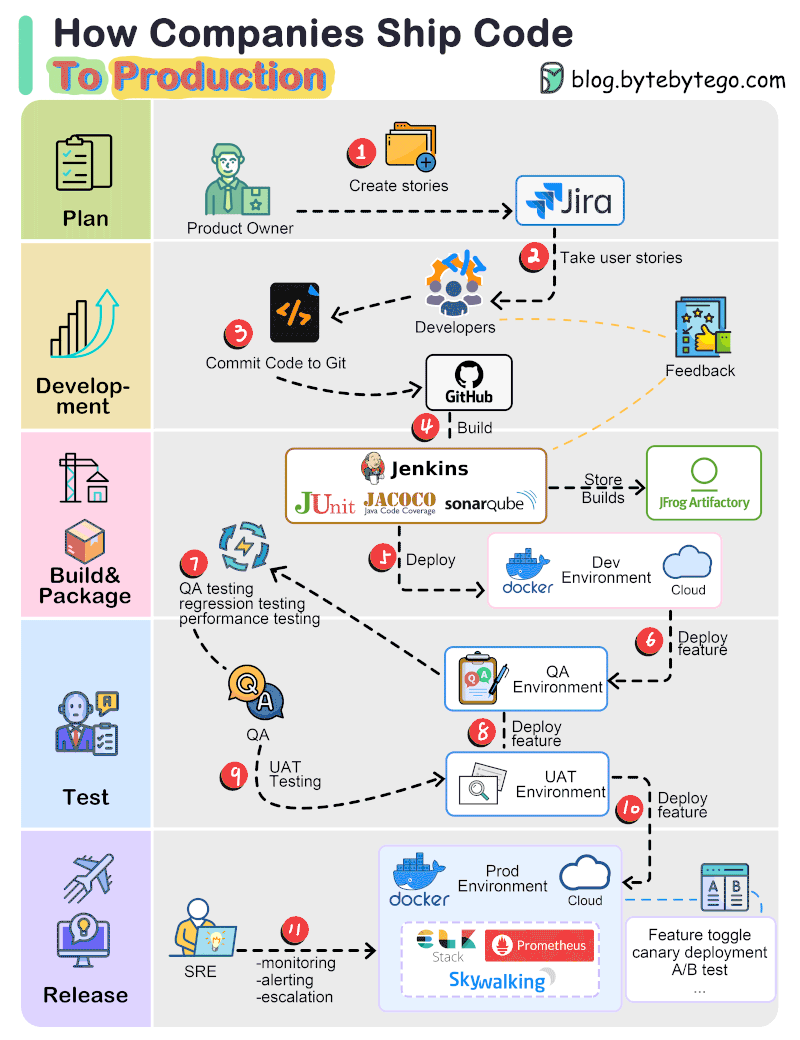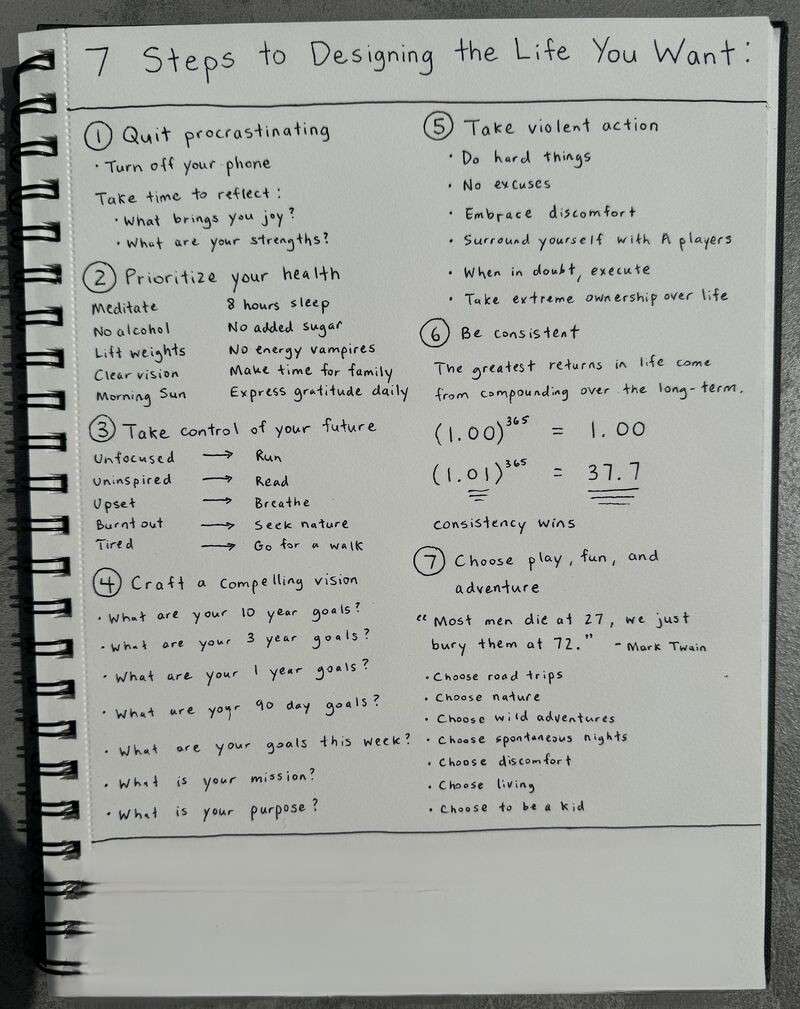Discover postsExplore captivating content and diverse perspectives on our Discover page. Uncover fresh ideas and engage in meaningful conversations
How do companies ship code to production?
The diagram below illustrates the typical workflow.
Step 1: The process starts with a product owner creating user stories based on requirements.
Step 2: The dev team picks up the user stories from the backlog and puts them into a sprint for a two-week dev cycle.
Step 3: The developers commit source code into the code repository Git.
Step 4: A build is triggered in Jenkins. The source code must pass unit tests, code coverage threshold, and gates in SonarQube.
Step 5: Once the build is successful, the build is stored in artifactory. Then the build is deployed into the dev environment.
Step 6: There might be multiple dev teams working on different features. The features need to be tested independently, so they are deployed to QA1 and QA2.
Step 7: The QA team picks up the new QA environments and performs QA testing, regression testing, and performance testing.
Steps 8: Once the QA builds pass the QA team’s verification, they are deployed to the UAT environment.
Step 9: If the UAT testing is successful, the builds become release candidates and will be deployed to the production environment on schedule.
Step 10: SRE (Site Reliability Engineering) team is responsible for prod monitoring.
Over to you: what's your company's release process look like?
--
Subscribe to our weekly newsletter so you won't miss it:
#systemdesign #coding #interviewtips

How to design your dream life in 2024.
Take these steps:
“Luxury is feeling unrushed. It is designing a life that allows you to do what you want with high leverage, with many options, all while feeling unrushed.”
- Tim Ferriss
The power of lifestyle design:
• Intentional action
• Unlocking your time
• Finding what you enjoy
Step 1: Build a Habit of Reflection
Learn to become keenly in tune with how your body feels.
What words describe your feelings right now?
• Flowing?
• At ease?
• Confused?
• Exhausted?
Begin to track how you feel and analyze why you might feel that way.
This builds a habit of constant reflection.
You begin to understand:
• What makes me feel good? bad?
• What are the nuances of my good moods? my bad ones?
When I started, I learned I was in a negative mood 70% of the time!
That completely shocked me.
Step 2: Assume Control
Repeat this message:
"I am the root cause of my feelings."
You are the one in control of your actions. You're never powerless to change how you feel.
Sounds easy, but it's the most difficult step.
We hate assuming responsibility for how we feel.
Hate your job? Who's forcing you to stay in the current one?
Feel frustrated with friends? Who's stopping you from communicating?
It may seem impossible.
But taking small steps creates instant relief.
You reassume control and learn that you can fix any problems that come up.
Step 3: Create Your Ideal Future
Write answers to these prompts:
• What does your ideal 24-hour-day look like?
• Do you prefer spontaneity or routine?
• What kind of diet is important to you?
• Where do friends and family play a role in your ideal life?
More:
• Do you want to experiment with philosophies like downshifting, slow living or minimalism?
• Are you pursuing FIRE?
• Do you want more hobbies/less? Which do you actually love?
• Can you combine hobbies with work?
• Where is your dream location?
Get to a granular level:
• What does waking up feel like on an ideal day?
• What does working out feel like?
• What does working my job feel like?
Step 4: Take Action
Synthesize all your answers to the past prompts.
Instead of setting a written goal, create an image of your ideal future in your head.
Whenever you need motivation, bring up that image to fill you with an unstoppable drive.
Then begin to reverse-engineer your better lifestyle.
• Make the purchases to improve your sleep stack
• Create a group of regular gym-goers
• Set up a budget to help you hit FIRE
• Begin to incorporate mindfulness practices weekly, then daily




